In the Media
Dan Rather interviewing Dr. Moussa on 48 Hours after TWA 800 accident.
2010 SAE/AIAA William Littlewood Memorial Lecture Award to Dr. Moussa
Dr. Moussa awarding 2009 ASME/AME Percy Nichols Award to Dr. Geo Richards
Dr. Moussa delivered Plenary Lecture on “Fluid and heat Transfer in Aircraft Fires
and Explosions” at the 5th WSEAS International Conference on Fluid Mechanics in 2008
Dr. Moussa spoke on Survivability/Vulnerability Considerations in UAVs at NDIA Annual National
T&E Conference in 2008
Several European newspapers and journals quoted BlazeTech’s work after the
Air France Concord accident in 2000
New York Times quoted Dr. Moussa after TWA 800 accident
BBC interviewed Dr. Moussa after TWA 800 accident
Dr. Moussa was awarded a Certificate of Appreciation by the ASME at the 1999 IJPGC
Conference
In 2003, Mass High Tech magazine published an article titled “BlazeTech
Software Prepared for the Worst by Looking for Vulnerabilities”
AIAA invited Dr. Moussa to join their Distinguished Lecturer Program in 2004
48 Hours
Dec. 19, 1996 - Click either image below to watch a video of the Dan Rather interview
After hearing about our report to the FAA on our Fuel Tank Explosion and Hydrodynamic Ram project, Dan Rather interviewed BlazeTech's Technical Director, Dr. Albert Moussa, for the CBS news magazine 48 Hours. Their interest was in the report's implications to the TWA Flight 800 disaster.
2010 SAE/AIAA William Littlewood Mem. Lecture Award
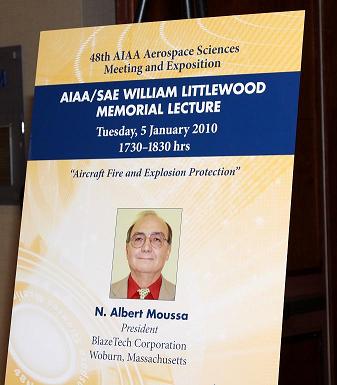
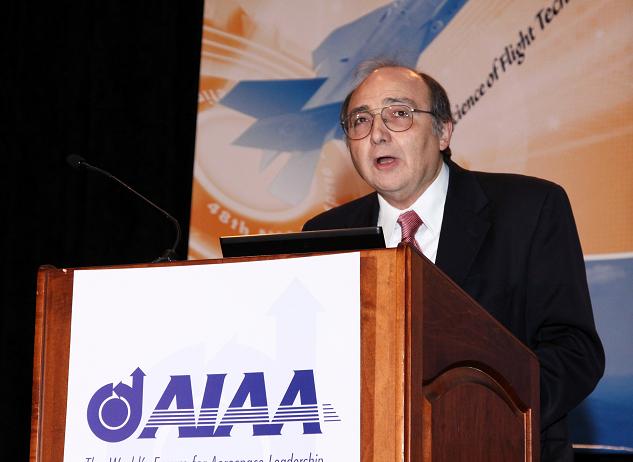
At the AIAA Aerospace Sciences Meeting in Orlando, FL on January 5, 2010, Dr. Albert Moussa gave "The Distinguished Lecture on Civil Air Transportation," honoring the memory of William Littlewood.
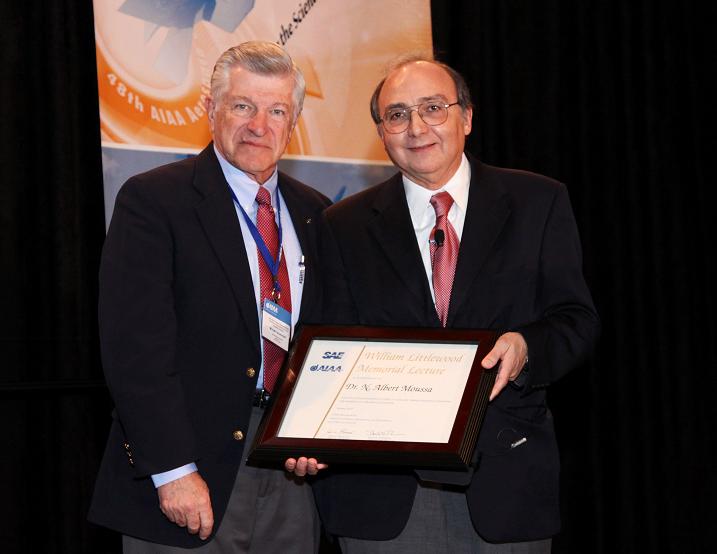
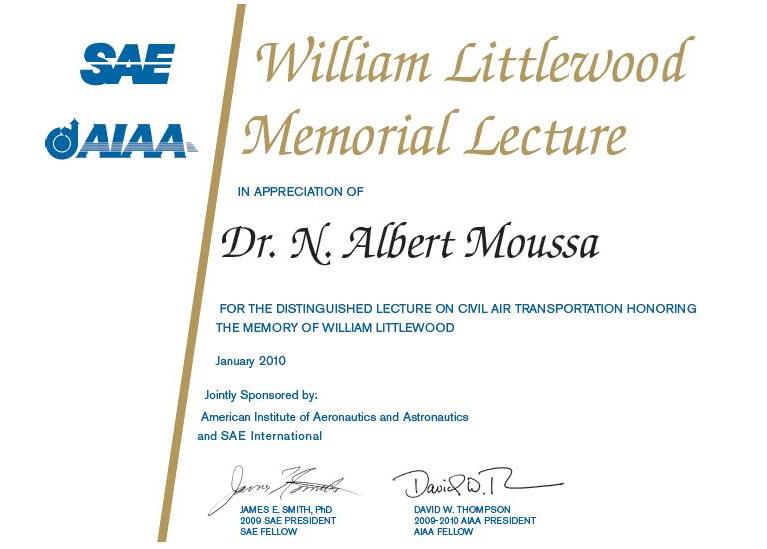
Dr. Albert Moussa being presented the award.
Details on the SAE/AIAA William Littlewood Award.
2009 Coal Utilization Conference in Clearwater, FL
Dr. Albert Moussa of BlazeTech participated in the plenary panel of the conference. As chairman of the 2009 ASME/AME Percy Nichols Award Committee, Dr. Moussa gives the Percy Nichols Award to Dr. Geo Richards, Focus Area Leader of the Energy System Dynamics in the National Energy Technology Laboratory, DOE.
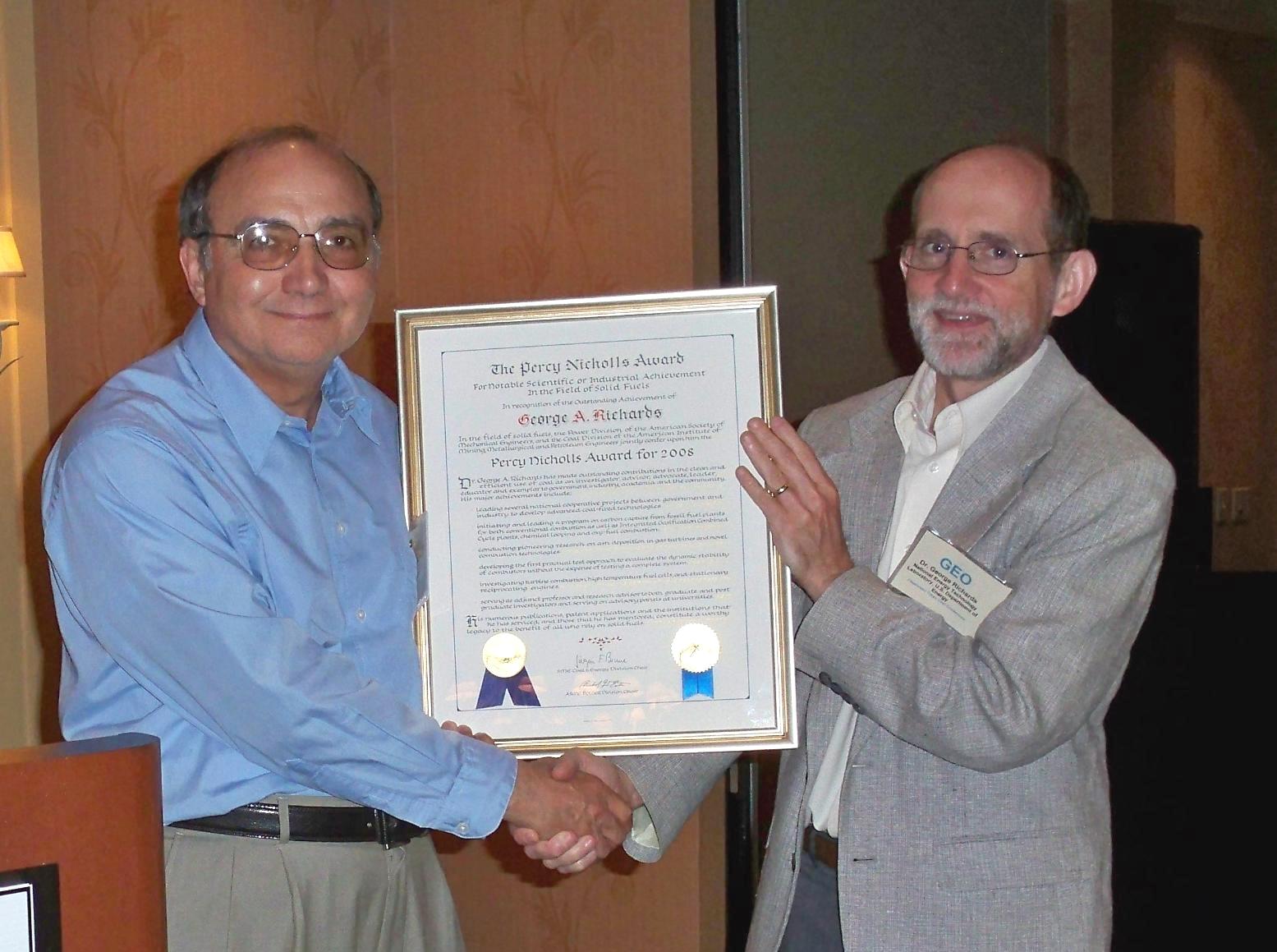
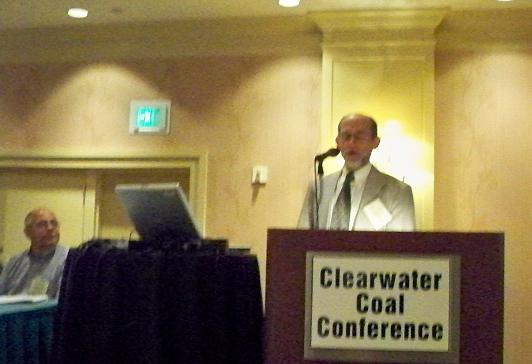
Dr. Moussa presenting Dr. Geo with award
Dr. Geo speaking, with Dr. Moussa looking in from panel
Plenary Lecture on "Fluid and Heat Transfer Issues in Aircraft Fires and Explosions"
Dr. Albert Moussa spoke on "Fluid and Heat Transfer Issues in Aircraft Fires and Explosions" at the 5th WSEAS International Conference on Fluid Mechanics, January 25-27, 2008. Visit the WSEAS website for more details.
Presentation on "Survivability/Vulnerability Considerations in Unmanned Aerial Vehicles"
Dr. Albert Moussa spoke on "Survivability/Vulnerability Considerations in Unmanned Aerial Vehicles" at the NDIA 24th Annual National Test & Evaluation Conference in Palm Springs, CA in February 2008.
Air France Concorde Disaster
After the Air France Concorde disaster in 2000, Dr. Albert Moussa was interviewed and quoted by a number of European newspapers and journals regarding a study conducted by BlazeTech in 1996 for the Federal Aviation Administration's (FAA) Office of Aviation Research. The report on this study is titled "The Potential for Fuel Tank Fire and Hydrodynamic Ram From Uncontained Engine Debris, " and was published in 1997. In this study, BlazeTech evaluated the potential for fuel tank damage caused by impact of foreign debris. After penetration of the fuel tank wall, the debris travels through the fuel and raises the pressure therein, causing tearing of the tank wall, much in excess of the initial penetration hole. This process is referred to as hydrodynamic ram. It is believed to be responsible for the large fuel release and the subsequent fire during the Concorde disaster. BlazeTech is developing an innovative technology FuelShield� to protect fuel tanks against such occurrences. This technology will also protect a fuel tank against the ullage explosion that occurred in TWA 800. The importance of this report has been recognized and referenced by numerous organizations concerned with aircraft safety and the Concorde Disaster. For example, AIRwise News states that the report "contains a wealth of information regarding the hazard to vital aircraft systems posed by debris from exploding tires." It has also been covered by Telegraph.co.UK as seen below.
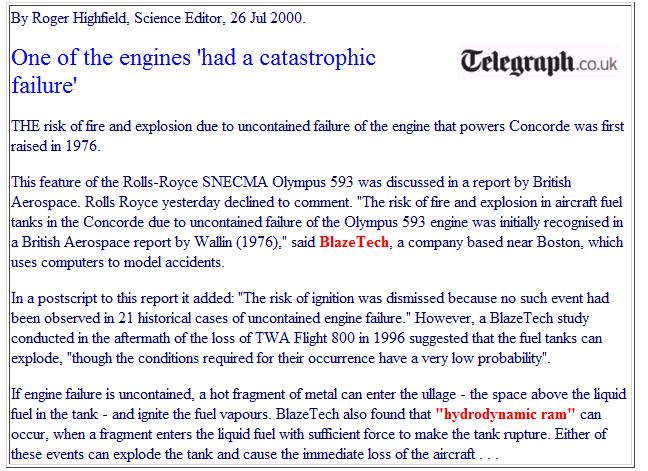
See the article in its original location at Telegraph.co.UK or download the PDF from BlazeTech's site.
The New York Times
Highlight of TWA Flight 800 article featured in The New York Times
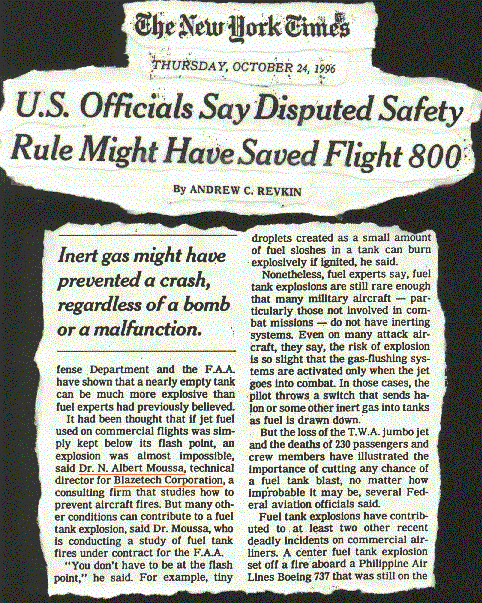
BBC
In 1997, Dr. Albert Moussa was interviewed by the BBC on the subject of the TWA 800 accident. He gave the BBC a demonstration of how nitrogen inerting can protect the ullage of an aircraft fuel tank against fuel vapor ignition. Click the image below to watch a video of the BBC interview
Other News
On July 27, 1999, during the International Joint Power Generation Conference and Exposition in Burlingame, CA, Dr. Albert Moussa was awarded a Certificate of Appreciation by the American Society of Mechanical Engineers "in testimony of the high regard of your associates for the deep appreciation of the society for your valued services in advancing the engineering profession."
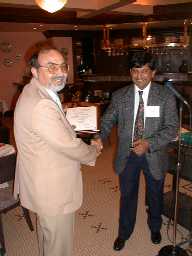
In 2000, Dr. Venkat Devarakonda was elected Chairman of the subcommittee on Fuel Properties and Characteristics in the FACT Division of the American Society of Mechanical Engineers.
Mass High Tech
|
Monday, October 13, 2003
By Elizabeth Dinan What would happen if all hell broke loose? Or a portion thereof? Say a car bomb detonated in an industrial warehouse, a fuel truck plowed into a chemical tank, or a dirty bomb was dropped onto an urban neighborhood. How would the surroundings be affected? What gasses would be released and for what distance would they be a threat? BlazeTech has the software that will illustrate those and other hells. Specializing in explosive, fire, chemical dispersion, aerosol processes and structural failure analysis, the Cambridge company's software uses known information to quantify a variety of terrorist-related hazards. Using a combination of physics, chemistry and technology, the potential hazards that are revealed can be used to take preventative measures. Founded in 1998 by Venkat Devarakonda (senior engineer) and Albert Moussa (president), the company's software products simulate the behavior of chemical and biological agents during storage, release and degradation. The company's focus a decade ago was on environmental concerns, while today it has shifted to homeland security. Ten years ago the chemicals of interest were different, Moussa says, though he's not at liberty to identify those agents. Today the BlazeTech programs analyze a gumbo of chemical agents including sarin, anthrax, nerve gas, mustard gas, tear gas, cyclo-sarin and botulinus toxins. "It's good to let people know that nobody's asleep at the wheel," Moussa says. "But we have to be sensitive. I can't say more." BlazeTech clients include government and industry looking for analysis by tapping the company's database of agent properties combined with physics and chemistry-based models. The outcome is a prediction of vulnerabilities, possible technology to counterattack agents, as well as a basis for intelligent emergency planning, positioning for early detection and strategies for first-responders. Industry uses the product for Environmental Protection Agency compliance and can opt to run the software, named ADORA, on their own desktops, or let BlazeTech run it and provide the outcome in report form. Another BlazeTech area of expertise is airline crashes. Moussa's 1996 report detailing the potential for fuel tank fires from airline engine debris was cited as the exact cause of an Air France Concorde crash four years later and brought him international recognition as an expert on the subject. Along those lines, the company is developing its trademarked FuelShield to protect airline gas tanks against that threat. But doesn't the disaster-centric nature of the business get depressing? "Only when you fly," says Moussa, adding that when he flies to share his expertise at various forums, it's not uncommon for him to spook other passengers. That's because to prepare, Moussa has been known to hold slides with images of aircraft disasters up to overhead aircraft lights. "That's part of the price," he says. In a world under threat, business is good for the privately held company. So good that BlazeTech is looking to hire a computation engineer and, according to Moussa, "a young grad with a good engineering and physical chemistry background." But don't look to them for any travel safety tips. Moussa says he behaves differently knowing what he knows but doesn't find it wise to share the knowledge. "There are things the airline industry could do but don't," he says. " It could possibly create a lot of commotion."
|
See the article in its original location at Mass High Tech or download the PDF from BlazeTech's site.
American Institute of Aeronautics and Astronautics (AIAA)
Dr. Moussa - AIAA Distinguished Lecturer In July 2004, Dr. Moussa was invited by the AIAA to join their Distinguished Lecturer program. The AIAA has 68 Sections throughout the US. The Distinguished Lecturers address section members at their monthly meeting to talk about topics of current interest. Dr. Moussa talked about aircraft fires and explosions, drawing upon a 3 day course that he teaches regularly to industry and government. The abstract of his one-hour presentation was as follows: While commercial air travel is an extremely safe mode of transportation, aircraft fires and explosions can occasionally occur with catastrophic consequences. Based on real-world examples, computer analyses, and ground testing, Dr. Albert Moussa provided an overview of the main types of in-flight and post-crash fires involving aircraft engine, fuel tank, cabin and cargo areas. He described how fires start and grow as well as the effects of contributory human (flight crew responses) and environmental factors. Finally, he detailed how recent accidents have led to stricter safety recommendations by the NTSB and requirements by the FAA, such as the use of a fire blocking layer in seats, improved fire detection and suppression systems, and fuel tank inerting. His presentation was illustrated with slides, computer model outputs, and short video clips.

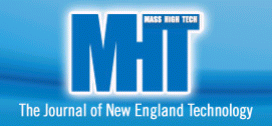 BlazeTech software prepares for the worst by looking for vulnerabilities
BlazeTech software prepares for the worst by looking for vulnerabilities